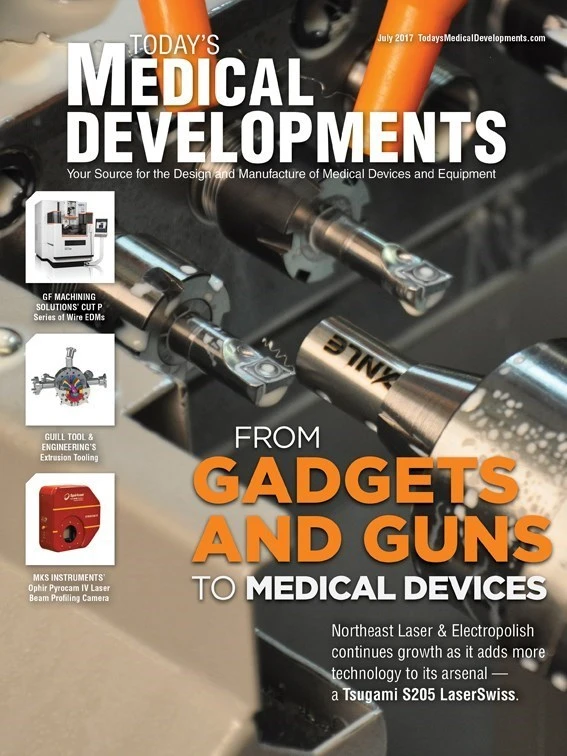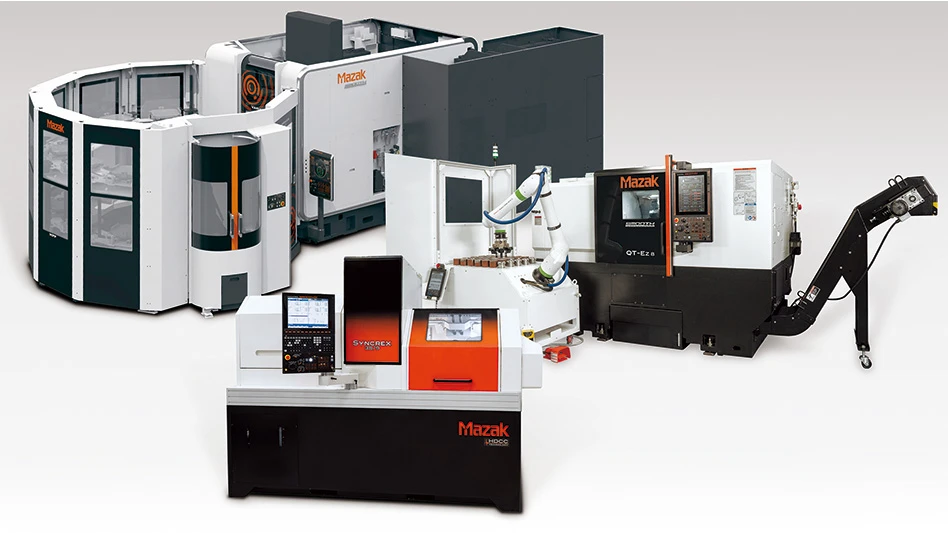
Medical device manufacturing encompasses more than machining cobalt-chromium into knee replacement components or watching a parts catcher fill with precisely turned bone screws. Cutting metal and making chips is not going away, but the industry continues to evolve as technology rapidly changes the way things are done.
Case in point, just look at your cell phone. It’s fast, sleek, and the technology gives you so much functionality that you can’t imagine leaving home without it. That technology in your hand wasn’t nearly the same a quarter of a century ago. In the Fall of 1992, IBM and BellSouth unveiled ground-breaking technology – the Simon Personal Communicator – the first smartphone, although that term wasn’t used until 1995. After an unveiling in 1992, it went on sale in August 1994, offering touchscreen capability along with email and fax functions. And it was a clunky 8" x 2.5" x 1.5", weighing more than a pound. Simon survived six months on the market, roughly 50,000 units were sold, and then it became history – in 2014 one was featured in a display at the London Science Museum.
I never owned a Simon, but I did have the much more successful Palm Pilot, released in 1996 – mine spent more time in the desk drawer than in use – and taken off the market in 2011.
Just as the smart phone changed, manufacturing continues to evolve and those in the market must stay on top of technology to adapt, grow, and thrive. Companies must invest in technology that enables advanced manufacturing, remote monitoring, data collection, and preventive maintenance. Design engineers need to know what alternative materials, components, and adhesives are available that might work better, last longer, or be more antimicrobial. And contract manufacturers need to remain technologically savvy – testing, challenging, and embracing disruptive technologies – so the most advanced systems can be offered to customers.
As you read through this issue, take notice of the technology and manufacturing disrupters we feature this month:
- Design engineers have expanded choices when developing products needing adhesives, and face more decisions on what end users want
- Machine tool builders develop more advanced, hybrid equipment that can increase a facility’s capabilities in a smaller footprint
- Contract manufacturers continue to invest, test, qualify, and embrace advanced manufacturing technologies as the demand for personalized products grows
No matter what manufacturing services you offer, customers want to know products are being manufactured in the most cost-effective, efficient, advanced manner possible – the best end-to-end solution they can get.
~ Elizabeth

Explore the July 2017 Issue
Check out more from this issue and find your next story to read.
Latest from Today's Medical Developments
- NAMSA will acquire WuXi AppTec facilities in Minnesota and Georgia
- Tolomatic’s Drive Integration Tool
- Cutting Edge Innovations: Maximizing Productivity and Best Practices with Superabrasives
- The toolbelt generation
- Covestro's role in transforming cardiac care
- Practical and Affordable Factory Digital Twins for SMEs
- UCIMU: fourth quarter 2024 machine tool orders on the rise
- Thomson Industries’ enhanced configuration capabilities





